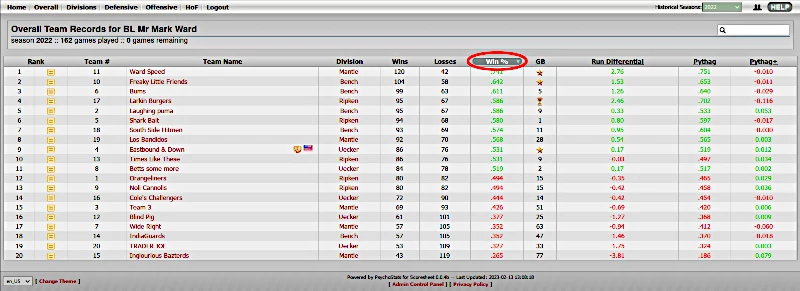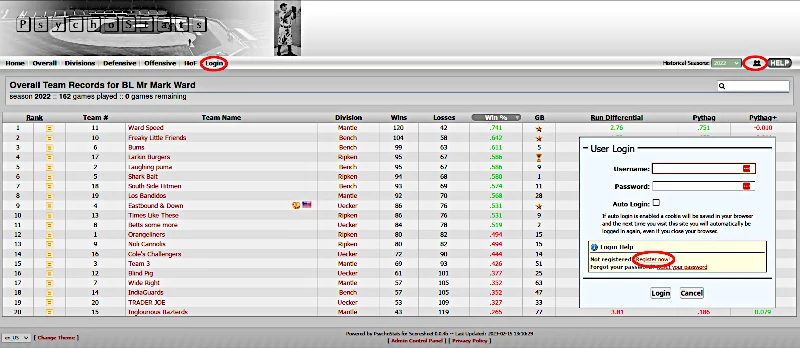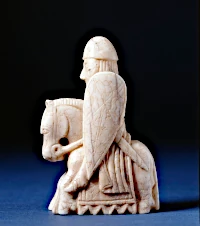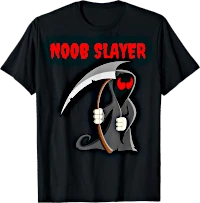Help Entries
HINT: Try to include specific words or acronyms that you think might be included in the help entry you are trying to find. For example, if you want to know how the DRAT rating is calculated, just enter "DRAT".

What is PsychoStats?
PsychoStats was software originally developed in the late 1990's by Jason Morriss, a.k.a. Stormtrooper, to display stats from Counter-Strike and other Half-Life games and mods.
PsychoStats has two parts, a backend script takes data from a source, such as multiplayer game server logs, and outputs it to an SQL database, and a front end written in PHP which takes the data from the database, organizes it into pages, and displays it in sortable tables on a website.

What is PsychoStats for Scoresheet Baseball?
PsychoStats for Scoresheet Baseball is about helping owners understand the history of their leagues. It presents the current and historical seasons' stats in tables that allow for fast and easy comparison. It is also useful for helping Scoresheet owners understand what types of players their fellow owners value, and the impact specific players have had on their own teams.
PsychoStats for Scoresheet baseball does this by scraping league data from the official Scoresheet league pages, organizing that data and displaying it in sortable tables on a web page. It is intended to make access to that data fast, user friendly, and to allow for easy comparisons between teams and seasons. It's primary focus is team statistics, although team rosters with individual player stats are also included.

How do I sort tables in PsychoStats?
Just click on the column header in any table, and it will sort the table based on the contents of that column. If you click it again, it will reverse the sort.
A few columns cannot be sorted. The headers of those columns don't display as links. The Division column in the Overall Team Records page is an example of one such column.
RA
Runs Against
This is the total runs against, including unearned runs, per 9 innings. For the purposes of PsychoStats RA is considered to be a more meaningful team statistic than ERA, due to the fact that it includes the consequences of fielding errors.
Formula:
[Total Runs Scored Against] / [Innings Pitched] * 9
CG
Complete Games
The number of complete games pitched by a pitcher for individual player stats, or by pitchers on a team for team stats. In PsychoStats the complete games thrown by Pitcher AAA have been removed from the team stats.
wOBA
Weighted On Base Average
From MLB.com
"wOBA is a version of on-base percentage that accounts for how a player reached base -- instead of simply considering whether a player reached base. The value for each method of reaching base is determined by how much that event is worth in relation to projected runs scored (example: a double is worth more than a single)."
In PsychoStats wOBA is both a team average statistic, and an individual player statistic. In PsychoStats wOBA does not include data for intentional walks and hit by pitch.
Formula:
( 0.69 * [Walks] + 0.89 * [Hits] - [Doubles] - [Triples] - [Home Runs] ) + 1.27 * [Doubles] + 1.62 * [Triples] + 2.10 * [Home Runs] ) / [At Bats] + [Walks] + [Sacrifice Flies] )
How does PsychoStats track Teams and Users?
Teams are primarily tracked in PsychoStats by team number. When a user registers they are given a unique user id. They are also associated with their team number and must also provide the owner name they registered with Scoresheet under. This means that user accounts must have a combination of a unique user id, team number and owner name. When the owner of a team changes any user account associated with that team number and owner name is automatically deleted.

How do I register for a user account in PsychoStats?
Clicking on the "Login" link in the top menu or the quick login icon will display a link that you can use to register a PsychoStats user account.
DRAT
Team Defensive Rating
Scoresheet Baseball games are a statistical baseball simulation, but they are not baseball itself. As such Scoresheet Baseball games generate their own unique statistics. One of the biggest challenges in real life baseball statistics is generating actionable data from defensive performances. Thankfully in the Scoresheet Baseball simulation, this is a bit easier because team defence is reduced to numbers.
DRAT is an attempt to generate a team defensive rating based on the defensive data generated by the Scoresheet Baseball simulation. It combines all the defensive stats into a single number. The meta objective of DRAT is to achieve a number that accurately reflects the number of defensive runs saved by team defence per nine innings. This has not been tested, and will likely never be, so what we are left with is an educated guess, and probably a not terribly accurate one. However the final number generated is useful for comparison purposes.
Formula (all stats in the formula are team total stats):
( ( [Outstanding Plays] - [Fielding Errors] - [Passed Balls] ) / ( [Innings Pitched] - [Strikeouts] * 0.33 ) + [Double Plays Turned] / ( [Hits Allowed] + [Walks Allowed] ) * 0.5 + [Opponent Base Runners Caught Stealing] / ( [Opponent Stolen Bases] + [Opponent Base Runners Caught Stealing] ) * 0.05 ) * 3
SRAT
Team Speed Rating
Scoresheet Baseball games are a statistical baseball simulation, but they are not baseball itself. As such Scoresheet Baseball games generate their own unique statistics. One of the biggest challenges in both real life and Scoresheet baseball statistics is generating actionable data from offensive numbers impacted by team speed.
SRAT is an attempt to generate a team offensive speed rating. It combines all the offensive stats affected by team speed into a single number. The meta objective of SRAT is to achieve a number that accurately reflects the number of runs scored impacted by team speed per nine innings. This has not been tested, and will likely never be, so what we are left with is an educated guess, and probably a not terribly accurate one. However the final number generated is useful for comparison purposes.
Formula (all stats in the formula are team total stats):
( ( ( [Stolen Bases] - [Caught Stealing] ) * 3 + [Triples] * 6 + [Run Support] - [Grounded into Double Plays] / 1.5 - [Home Runs] * 1.5 ) / ( [Hits] + [Walks] - [Home Runs] ) * 10 + 10 ) * 0.05
Player Range
Player ranges are among the most complex elements of the Scoresheet game sim mechanics. Player ranges determine how many Outstanding Plays your team will generate, as well as how many Double Plays your team will turn. Half of the range rating of infielders is a standard Scoresheet range rating, and half is a double play rating. Players playing CF have their range rating doubled.
V
Player Value
The "V" rating attempts to assign a percentile value rating to the contributions of each player on a team's roster. It is based on the player's Scoresheet statistics, not the player's MLB statistics. The formula is different for hitters and pitchers, but the goal is to allow hitters and pitchers to be compared with each other.
The "V" rating attempts to answer the question, "How important was this player to this team?" This is not a theoretical question, it is a practical question, and as such, is based on how the player was actually used by the given team. The value of a player to the given team will be affected by factors such as roster and platoon decisions, as well as how many games the player actually played with the team.
The formula for pitchers uses WHIP and Innings Pitched while the formula for hitters uses OPS and At Bats. It is intended to be simple, robust and easy to understand. The word "robust" is intended to mean "not easily prone to failure or statistical anomalies". In each case the basic calculation is modified by a constant. Results less than 0 in the stats are displayed as 0.
The results of the following formulas are prorated relative to a 162 game season, which means the results are divided by the number of games the team has played and multiplied by 162.
Pitcher Formula:
( 2 - [WHIP]) * [IP] * 1.666 / 1000
Hitter Formula:
[OPS] * [AB] * 0.595 / 1000

Winning Trades
There are two ways to acquire players in Scoresheet, one is through trades and one is through the draft. Drafting well is the absolute bedrock for building a winning team, but trading well can put your team over the top. So how do you "win" trades in Scoresheet Baseball?
Let's start with the word "win". One of the most common mistakes made when approaching trades is the idea that you need to "win" every trade that you make. Scoresheet is a game with a very long "play arc" and the wisest and craftiest owners play the game as it if were chess, always trying to think several moves ahead of every other owner in their league.
There are some who say that the team that gets the best player in a trade, has "won" the trade. That's a good basis to start on, but that idea does not even begin to capture the subtleties of making trades in a Scoresheet league. One thing you do not want to do is make a trade where the result is that the other owner never wants to make another trade with you.
Trading in Scoresheet is a psychological and social game as well as a strategic game. You want to trade, as much as possible, from strength to weakness. In other words you want to trade from a surplus your team may have, to shore up a deficit your team may have. Sometimes it is also a good idea to allow another player to "win" a trade with you.
Good will and friendship are a great foundation to build future trades on.

We All Need Noobs
I've been active in a number of online communities over the past few decades. It's pretty easy to separate the healthy communities from the unhealthy ones. It all begins with the way new members are treated.
Healthy online communities understand that online there is always a great deal of "churn", and their survival depends on a constant supply of new members. Healthy online communities treat new members with respect and kindness, and they put up with them wanting to discuss the same old topics, over and over again, because for the new member, those topics aren't old, they are new and fresh.
I played Scoresheet way back in 1996 and then took a two decade sabbatical from baseball. In 2019 and 2020 I picked up a couple of Scoresheet teams. So even though I've played a lot of fantasy baseball in my time, I was essentially a noob.
In 2021 I decided to participate in the Mock Draft. I thought that this was a great place catch up on two decades of missed time, talk some baseball, learn some tricks, have some fun and maybe even make some new friends.
I was wrong.
I was enthusiastic. I dove in with both feet. I had a lot of ideas. I had a lot of questions. I was told to shutup, multiple times, in multiple ways, directly and indirectly, privately and publicly.
It culminated with me drafting Myles Straw.
When I picked Myles straw, one of the established "pillars" of the Scoresheet Mock Draft community rage quit the Mock Draft chat. The feedback was immediate, and it was fairly vicious. At that time I didn't have the confidence, or the desire, to engage in an all out online brawl, so I quit the draft and left my team for someone else to pick it up.
The thing is, most Scoresheet owners use the same resources to rate their players. They use the same metrics, take advice from the same "experts" and the same few established sites.
I don't. I have my own ideas, I value players using metrics that are widely available, but I don't use them in the same way that most owners in Scoresheet do. I tend to value the same players that other owners do, but I occasionally find treasures that others don't, because I have something that is unique to me: a different perspective. And occasionally those "treasures" don't pan out—something that can be said for anyone who plays fantasy baseball.
But this really isn't about me, this isn't about Myles Straw, this is about online communities and the way they treat new members, and specifically new members with different perspectives. Myles Straw just illustrates the point.
Every online community needs noobs. Every online community needs to treat those "noobs" with patience, kindness and respect. The ones that don't will die. Every healthy online community, no matter how old and well established that community is, needs constant renewal from new members and the different ideas and perspectives that they may bring.

Stages of Rebuild
In professional sports, and in fantasy sports such as Scoresheet Baseball, where you actually build and play teams, there are four pretty clearly defined stages of team building:
1. Disaster Recovery
2. Rebuilding
3. Win Now
4. Domination
Disaster Recovery
The first stage is the most discouraging, and the most difficult to move out of. It tends to be a bit easier in Scoresheet in AL/NL only leagues due to high value free agents changing leagues, but in BL leagues moving out of that first stage can be extremely difficult. It is the stage where nothing is going well, where your options for trades and reshaping your team are limited because your team will have very few assets with any value. The end of the tunnel can seem a long distance away and very dark in this stage.
The focus in this stage should be on accumulating assets with value, even if they don't match your team "philosophy". Even if you don't like them. In this stage you need to take advantage of high round draft picks to pick the players that have the most perceived value, regardless of position or injury status. The key to this is research. Find out who the most coveted players in the amateur draft are, keep an eye on the international signings, snatch up the crumbs with value that other teams let fall. In this stage your team will not have chips to play with, and you need to accumulate those.
Thankfully very few teams actually fall this far, but it can, and it does, happen. If you have a team that falls into this category you need to take on the mindset of a hoarder. Hoard those players that have value, no matter who they are. Always be ready to take advantage of good trade offers, but in all likelihood, in this stage, your focus should be on building through the draft, and if you do make trades, ignore all positional factors, focus on players that have trade value, more than anything else. Your team is going to lose a lot in this stage, embrace it and have fun with it.
Rebuilding
This is the stage where you need to make specific goals and plans for your team, without losing sight of the fact that winning teams win with good players. What kind of team do you want to build? What kind of lineup do you want to build? Winning teams need at least something of everything, they need both run prevention and the ability to score, but you can choose to focus on one or the other, or take a balanced approach. This is the time to start spending those chips you accumulated and focus on making smart trades.
In some ways this is the most fun stage of all the stages, and some owners never leave this stage, because, apparently, that's what they enjoy. Winning at this stage should not be a big concern, but at some point, if your plans are well made and players are developing, you should start to see your team become more competitive. You shouldn't see the unending strings of blowout losses that are a feature of the first stage. Your team will still likely be losing a lot of games, but they should be closer, and you should see far fewer blowout losses.
In this stage you will want to start thinking about your team's "competitive window". Focusing on youth is a good idea, but more important than that is trying to build a team where, if all goes according to plan, most of your core players will be in their prime years at the same time. The key to this stage is patience. Understand that most young players entering the league for the first time will struggle. It can take as much as five full seasons for a minor leaguer to make that transition to the major leagues, that time frame can be even longer for pitchers than it is for position players.
Win Now
This is the stage that most of the well managed teams in Scoresheet consistently exist in. You've build a solid core, you have a grand strategic vision for your team, it's time to fill in the holes, build depth, and spend your time playing whack-a-mole with the injury gremlins that pop up. The keys to this stage are to not trade away too many draft picks and not protect too many minor leaguers. If you are going to win consistently in Scoresheet you need, more than anything, to avoid Pitcher AAA, and to do that you need to draft and hoard pitching, pitching, and more pitching.
This is the stage where you get to just "play the game". Have fun with lineup strategies, plot to throw wrenches in the spokes of your fellow owner's bicycle wheels, relish the carnage. As long as you are within 3 games or so of a playoff position at the end of August, and you have a full roster with some depth, you have as good a chance as anyone to win a championship.
This is also the stage where you need to start thinking about "maintenance" and "churn". You don't want to fall back into stage 1, whatever you do, so you need to think about replacing core players as they near the end of their playing years, or develop physical problems. This is the stage where you need to start thinking about building a "farm system". You don't want to protect too many minor leaguers, but you do want to protect a few quality ones. The focus there should also be on value, rather than positional or philosophical objectives. You can always trade a player with value for a piece you need.
Domination
This is the final stage of team building, and it is a stage that few teams ever reach. It is also the most difficult to maintain, and can even be harmful to a Soresheet league's health. Thankfully, in Scoresheet, it doesn't guarantee championships. Scoresheet playoff mechanics ensure that any team that is within range, with some depth, at the end of August, can win a championship, you just need your team to have a good September. So while having a dominant team can be good for the ego, it doesn't guarantee championships, not by a long shot. And if you've brought your team to this level, you no longer need my advice, so you aren't going to get any of that here.
How Do I Tell What Stage My Team is In?
When you are mucking around in the basement of your league, and looking for some light at the end of the tunnel of lopsided losses and Mr. Pitcher AAA, it can be a little difficult to know exactly what stage you are in, and whether or not any of the advice given here applies to your team. As is the case with this entire article, here are some ideas, you can take them or leave them, as you like.
I use something I call "The Star Index", although it might be more properly called "The Super Star Index", as one tool to help assess what stage of team building my team is in. While the judgment can be somewhat subjective a "star" for the purposes of the index rating is a player that the vast majority of baseball fans will look at and agree, "that's a star". These are "impact players", players that, if you drop your team, will be a reason why a potential owner would pick up that team.
For the purposes of this rating a player like Mookie Betts would be a "star", while a player like Randal Grichuk, no matter how much you may like him, would not be. While most star players have an established track record some few players merit the "star" rating before they've played a game in the majors. Wander Franco was one of those. Star players should also have some form of long term value as well, so Corbin Burnes would qualify as a "star" while, even though the point could be argued, perhaps Max Scherzer and Justin Verlander do not. It can get a little messy, but most of the time it is not.
So a quick rule of thumb would be the rule of twos. A team in stage one, Disaster Recovery, will likely have a Star Index rating of 0. A team in stage two, Rebuilding, would likely have a star index rating around 2 A team at the Win Now stage might have a Star Index rating of 4, while a team at the Domination stage might have a Star Index rating of 6 or better.
Another quick way to judge how strong your team is to build a quick protected list. Try to be objective. A protected player should be one that is better than most of the players available in the draft, especially in a BL league, although in an AL/NL only league the players at the top of the draft, free agents that have changed leagues, will likely be better than most players that most owners protect. I'm also not talking about protected minor leaguers, I am talking about players that will help your team win games, and most protected minor leaguers are not going to do that, with a few notable exceptions.
If you are having a hard time putting together a list of 13 protected players, there is a good chance you are either in stage 2 or stage 1. If you can objectively find only 8 or less on your team that are worth protecting, there is a very good chance you are in stage 1. Teams in stages 3 and 4 will typically have lists of players worth protecting that are much longer than 13 players.
And of course, the final, most obvious measuring stick for your team is it's winning percentage. If you have a winning percentage at the end of a season that is lower than .400, there is a very good chance you are in either stage 1 or stage 2. Stage 2 can run the gamut from as low as .300 to as high as .500. I think to be legitimately in stage 3, your record in Scoresheet needs to be .500 or better, and if your record at the end of a season is .600 or better, you are flirting with stage 4, Domination. If your team record is .700 or better, especially for more than one season running, you have probably arrived at stage 4, Domination, and some of your fellow owners might be getting discouraged.